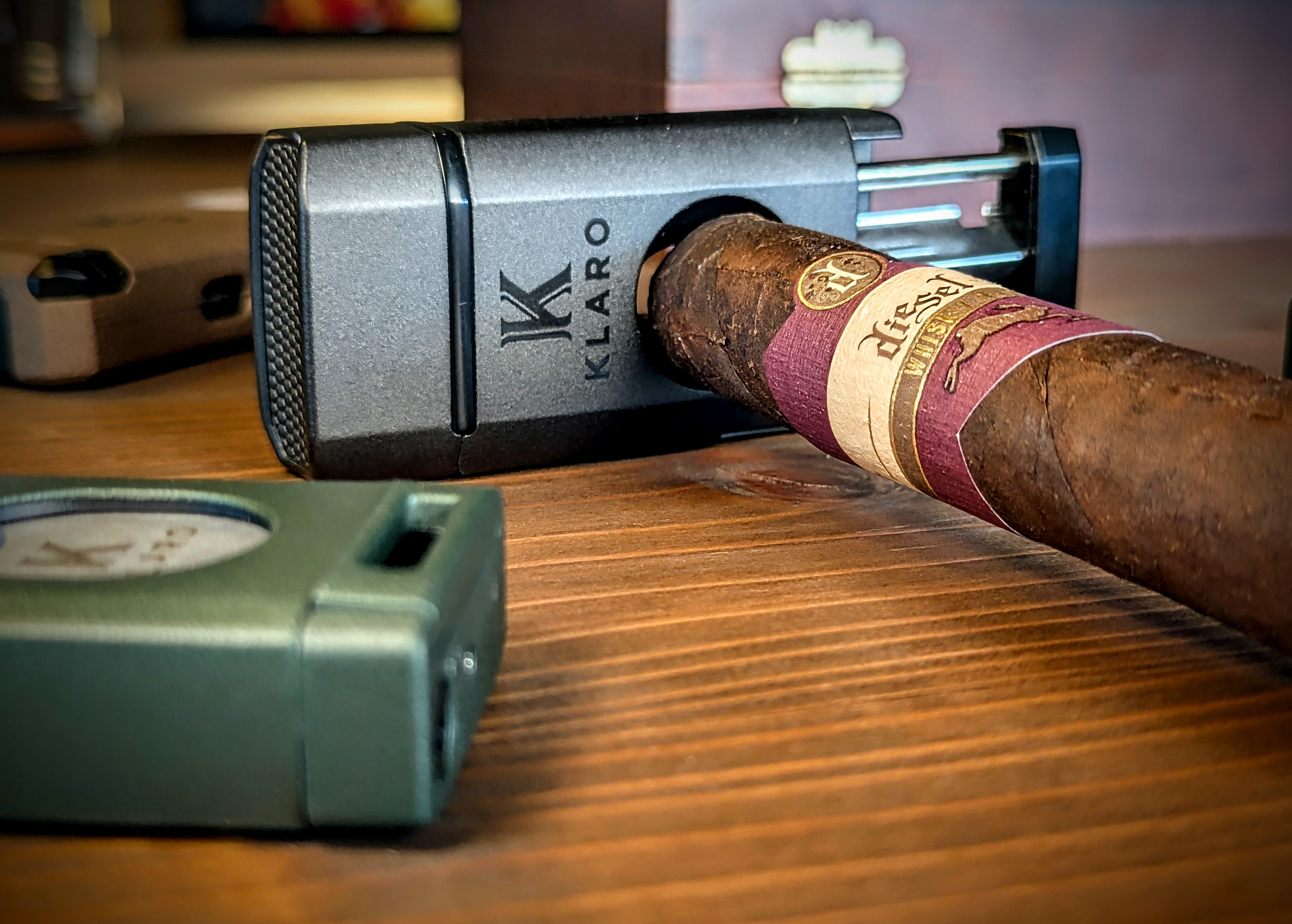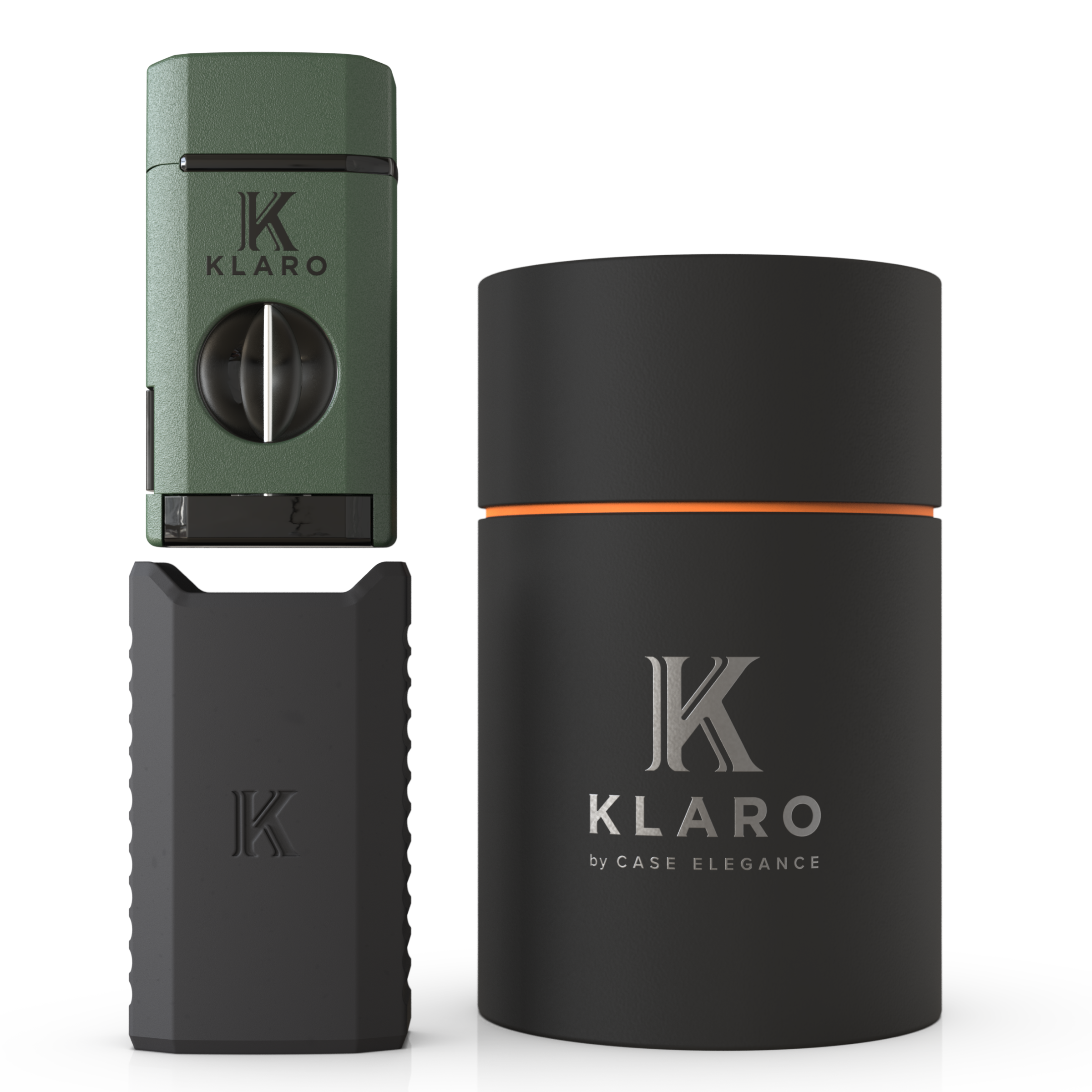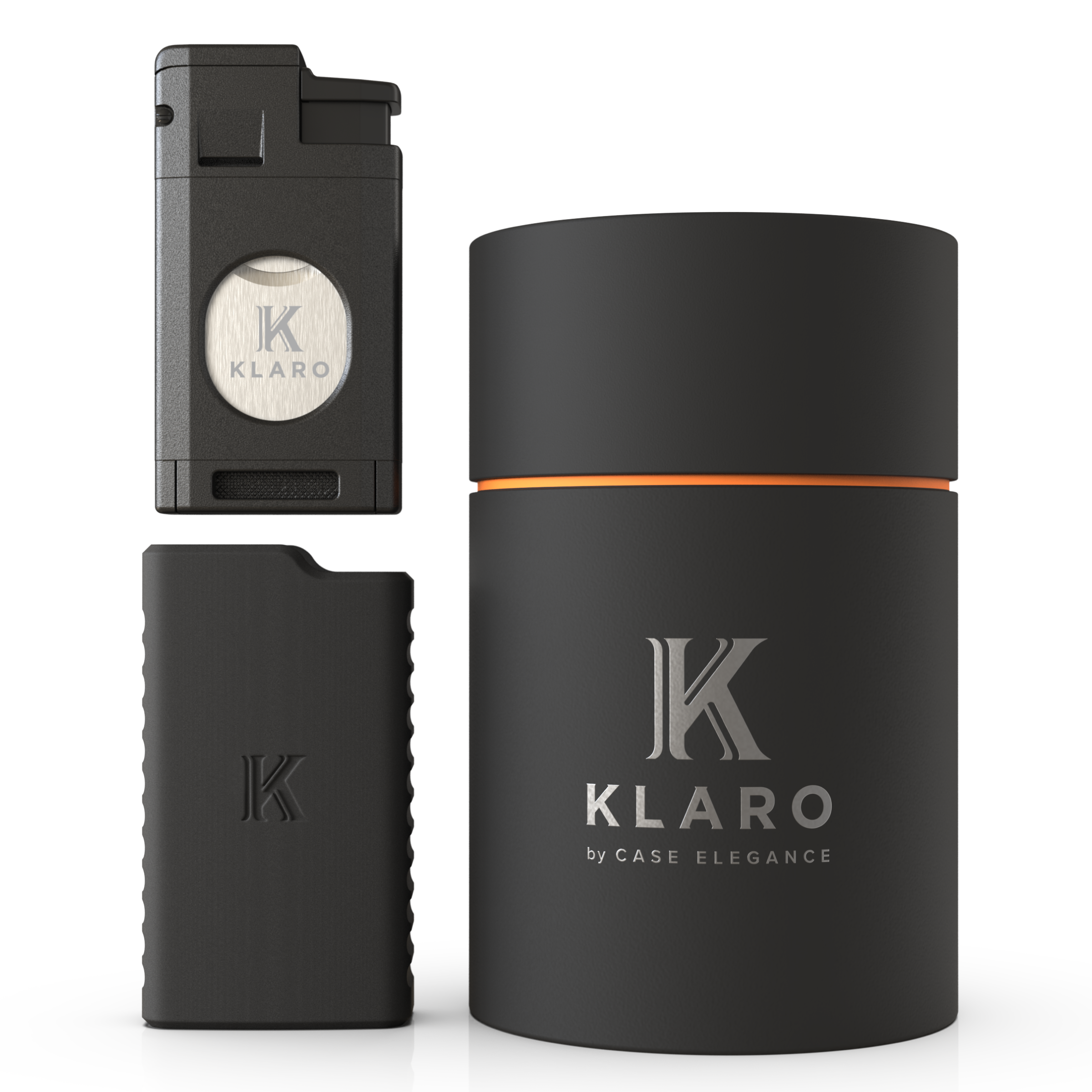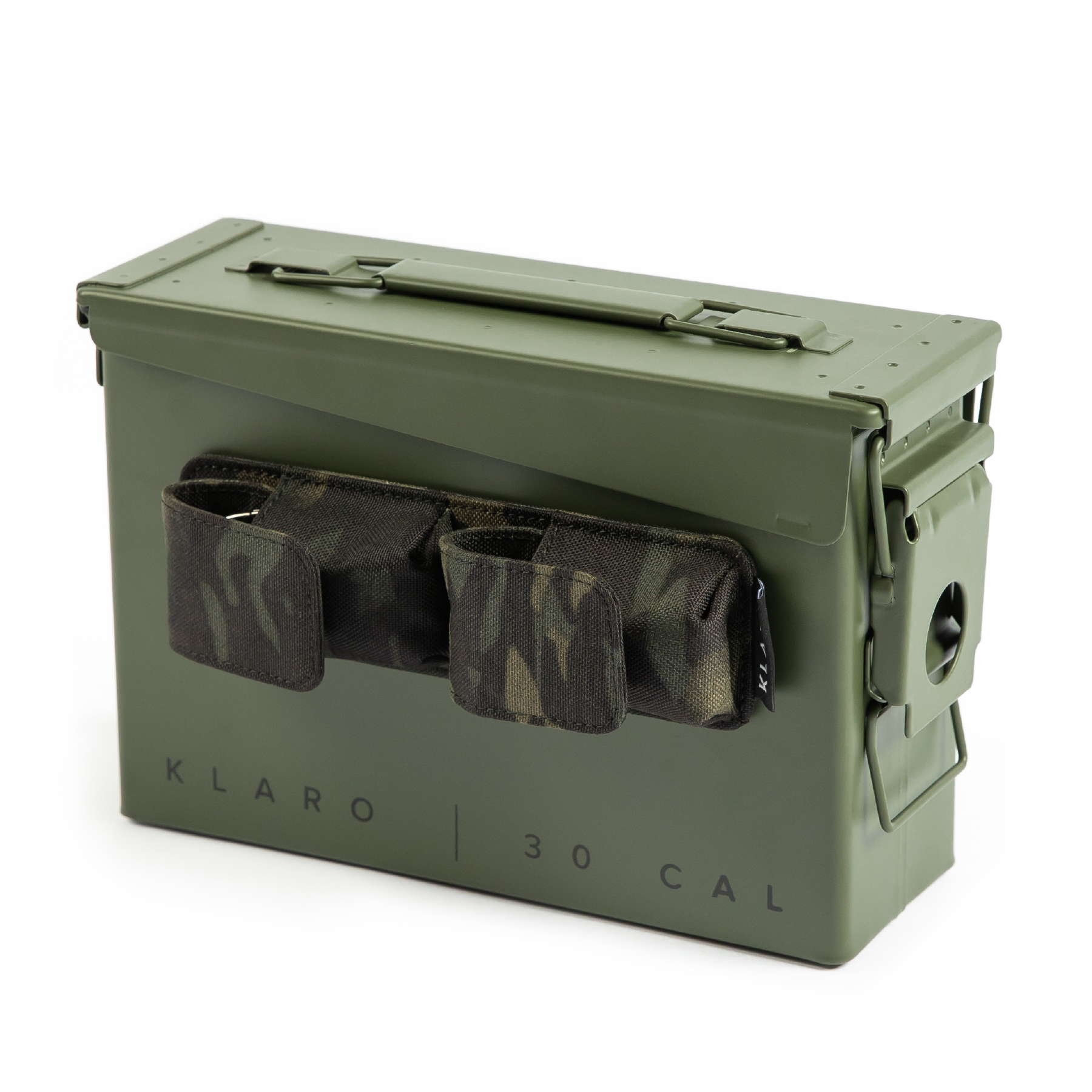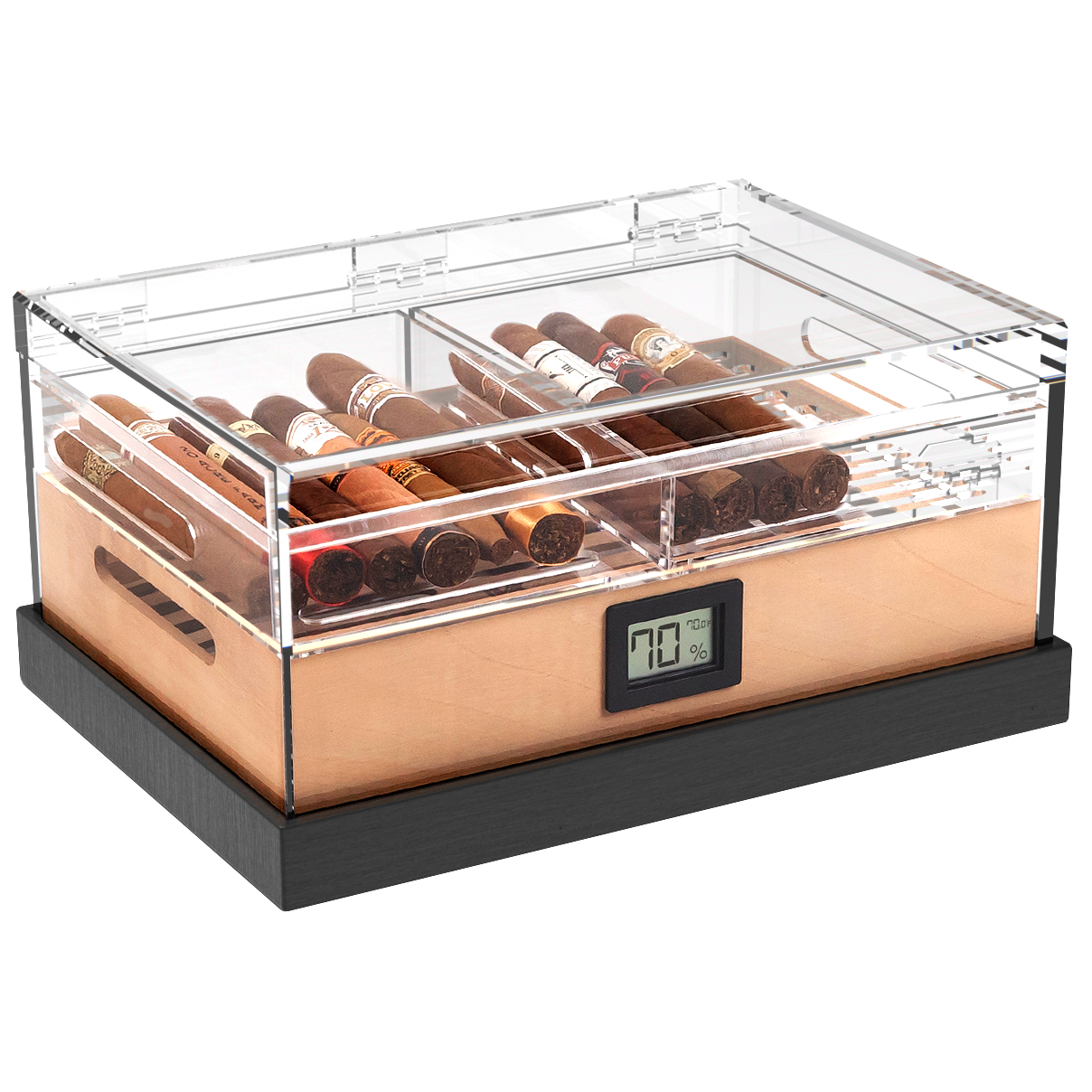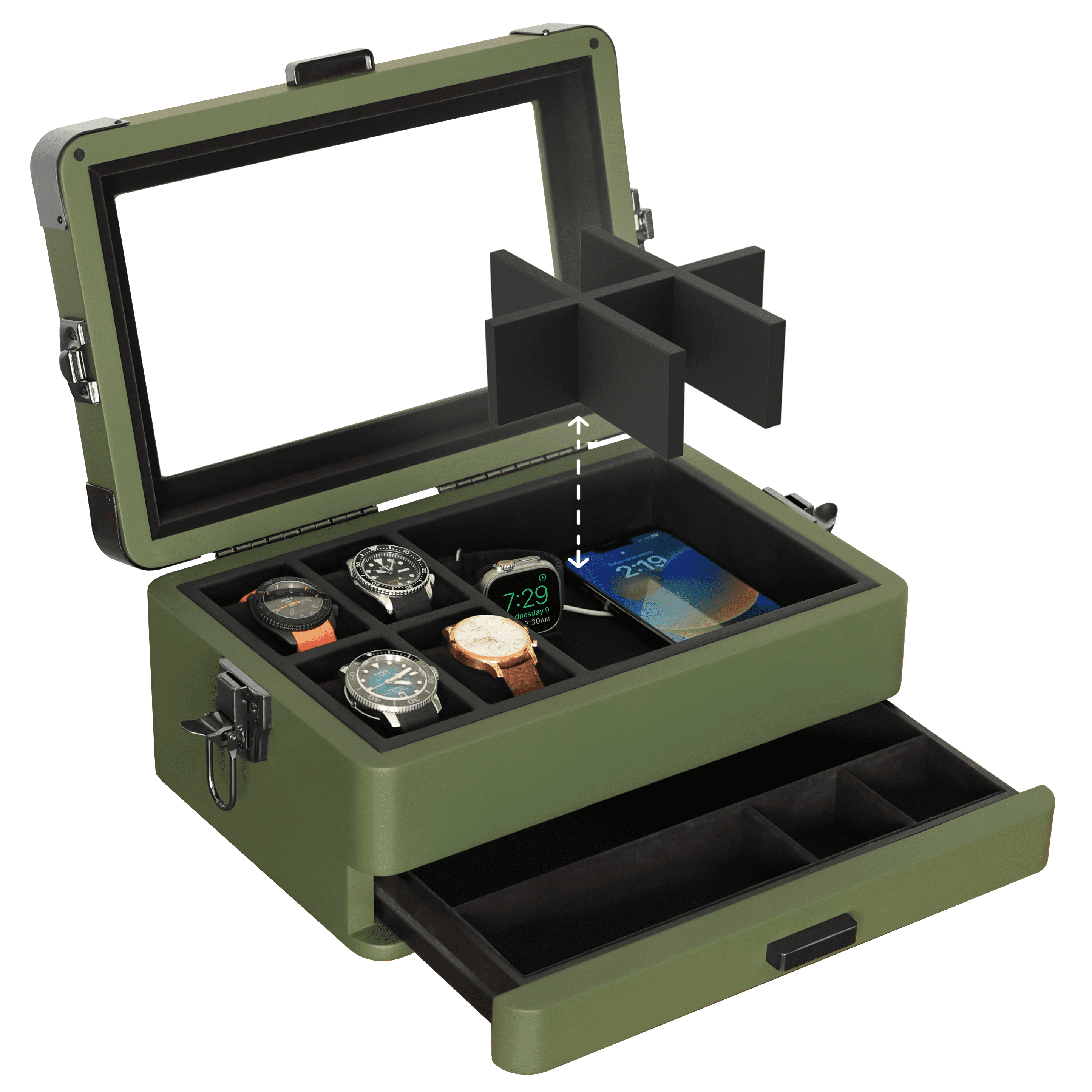- Prioritize functionality when choosing a humidor.
- Consider capacity: what's the maximum number of cigars you'd keep?
- Understand how the humidification system works for your specific humidor.
- Spanish cedar is an important element to most humidors.
There's a humidor for almost every application, every preference. The tricky part is narrowing down what you're looking for to one or two home humidors that do everything you need. (And maybe a travel humidor).
Make sure you get the humidor that's right for you.
With so many options out there, how does one go about selecting the right cigar humidor? Consider your cigar storage needs, functionality. Research what style of humidor best meets these needs.
The following ten examples represent some of the most common humidor types, and are most likely to include something up your alley. Consider their strengths, weaknesses, and key features before committing to a particular style of cigar humidor.
1. Single Chamber Humidor


Kicking things off is the traditional, tried-and-true, single chamber cigar humidor box. Simple in design, easy to maintain. This style of humidor is what you might see in hollywood movie. Classic.
But don’t let their slight stature deceive you. If properly seasoned, a single chamber humidor can be perfectly effective at full capacity.
Commonly constructed with a wood or heavy acrylic exterior, single chamber humidors are traditionally low in profile and don't take up too much space on an office desk or shelf. Access points also tend to be singular in nature, with a vertically hinged lid made from the same material as the rest of the box.
With room for no more than 25-30 cigars serving as the norm, many single chamber humidors come with their own integrated space-saving accessories. The underside of the lid commonly serves as a home for humidification devices, as well as a mounting point for either analog or digital hygrometers for humidors.
Humidifier and hygrometer placement will vary depending on the type. As you'll see, we recommend digital hygrometers for your humidor, and the single chamber is no exception. Small single chamber humidors will also respond a bit better to humidor packs than usual, but humidor solutions and gels is still our recommendation.
2. The Multi-Tier Hinge Top Humidor
Stepping things up a notch (or two), is the multi-tier humidor. True to its name, this considerably taller humidor box rocks many of the same external aesthetics as its stockier, single chamber sibling, but with one or more removable stackable trays stuffed inside. This multi-tiered tray design provides several benefits that a singular storage humidor box can’t offer.
First off, this type of cigar humidor allows the categorization of different styles, vintages, and flavors, thus reducing the risk of accidentally grabbing the wrong smoke. While the jury is still out in regard to whether or not muddled flavors form by placing one kind of cigar beside another during the aging process (flavored cigars being the primary exception here), some people just like the look of having all of their corojos on one shelf, shade-grown wrappers on another, and maduros toward the bottom.
Compartmentalization also allows the integration of cigar smoking accouterments into the storage chamber itself, while reducing the risk of damaging those delicate tobacco leaf wrappers. Humidor accessories like humidor packs and cedar hydro sticks can easily find a home in a multi-tier humidor, as can things like punches, cutters, and even tins of petite cigars.
Hygrometers for humidors with multi-tier internals are either externally mounted for easy assessment, or on glass top models, are typically placed atop the upper tray for a top-down reading. Due to being larger in size, the need for mounting the humidor humidifier on the underside of the lid is no longer a requirement, so it is not uncommon to find a dedicated humidification tray or jar stuffed toward the bottom of the box.
Just note that if you do not choose to nestle your free-floating humidifier on the uppermost shelf, the act of accessing it for routine humidor maintenance will require pulling trays out and moving everything around.
3. Glass Top “Savoy” Humidors
Widely recognized as the pinnacle of opulence in the cigar smoking world, glass top humidors are just as visually appealing as they are practical. While the transparent portion of the lid that gives this type of humidor its bespoke name is typically constructed from thick tempered glass for durability and safety, you will occasionally encounter humidor box windows that have been constructed from acrylic or even crystal.
While the appeal of these humidor boxes is exceedingly self-explanatory (who doesn’t enjoy staring into a box brimming with beautifully wrapped tobacco?), the functionality of the “see-through” cigar humidor is multifaceted.
Glass top humidors add additional weight to the lid (acrylic being the obvious exception here), which helps guarantee a tighter seal when the lid is closed. As with most of the options on today’s list, this design generally utilizes traditional humidor wood like Spanish cedar for the actual seal itself, as well as for the walls of the internal compartment.
Since hygrometers for humidors with glass tops cannot be mounted on the underside of the lid, readings of internally mounted hygrometers can be conducted by looking down into the humidor box. This helps maintain consistent humidity levels, as it eliminates the need to open the humidor to check on moisture content or inspect the amount of remaining media in a humidifier jar.
Cigar inspection is also a snap with a glass top humidor. All it takes is a quick glance through the glass top, and your eyes will tell you everything you need to know about internal conditions, what smokes you currently have on hand, and whether or not it’s time to stock up on stogies.
4. Humidor Jars
It may sound silly, but cigar jars are indeed a thing. All it takes is a quick visit to a cigar factory, and you will discover that these simple storage substitutes actually serve a purpose.
Commonly formed from ceramic, glass, acrylic, and porcelain materials, cigar jars have long been used as a space-saving, inexpensive alternative to box humidors. From saloons and gas stations to smoking lounges and the old-fashioned “five-and-dime,” humidor jars have served as a cigar storage solution for the better part of the past century.
Today, branded cigar jars tend to be more of a novelty item than anything else. The traditional marketing method of offering “factory fresh” cigars in a limited edition, pot-like container has long lost its appeal. This has caused bespoke cigar jars from houses like H. Upmann to become revered as trophies, despite the fact that these jars tend to work quite well as a humidor.
Cigar jars often have extremely tight seals, and oftentimes come with affixed locking clasps for additional peace of mind and safe tobacco transportation straight from the factory.
If you don’t have a branded cigar jar sitting around, you can always buy one online and then add a humidification device to the lid of the container along with some Spanish cedar or another type of humidor wood. Most types of cigar jars come constructed from thick glass or acrylic, which is perfectly fine just as long as the lid is tight and you store the jar well away from light and heat.
The downside to this design is that the vertical storage of cigars increases the risk of damage. The act of shoving a cigar in amongst a group of stogies, removing a single stick, and having a cigar smash into the wall of an understocked jar are all very real concerns.
There is also the concern of having too much humidity in such a small space, and finding a place to mount your humidor humidifier and hygrometer can be a challenge.
Tobacco Nerd Note: As the story goes, it was the H. Upmann brand that first utilized a jar as a method of packaging and marketing cigars, with the first recorded use of this method being in the early 1900s. The popularity of the "Amatista-style" Cuban cigar jar saw continued growth in popularity well into the 1950s and ‘60s, making it a staple in countless smoking rooms and lounges across America. But when the Cuban embargo kicked into high gear in 1962, the whole marketing method went up in smoke, thus forcing this unique form of packaging to become little more than a side note in the annals of cigar history.
5. The Napoleon Humidor
While it may be tempting to make short jokes about Napoleon smoking really stubby Robusto cigars, the humidor that bears his name has some serious pros and cons that must be taken into consideration.
The most obvious thing about this style of humidor box isn’t its height (no more short jokes, I promise) but the fact that it has multiple rolling or sliding drawers along its face that pull outward. While modern variations often pack a glass top, traditional Napoleon humidors tend to have a hinged wooden lid, with a partitioned cigar holder tray stuffed underneath offering easy access to a handful of smokes.
Despite being exceedingly ornate in nature, with vintage Napoleon humidors sporting extremely detailed inlays and artwork, this style of humidor box is notorious for having one major downfall: It leaks.
All of those drawers on the front of a Napoleon-style humidor have their own seals. Due to being of the sliding variety, the humidor wood tends to develop gaps over time due to wear and tear and sagging, thus allowing humidity to escape and contaminants like dust to enter. There’s a reason why all of the highest-rated cigar humidor box designs have a top-mounted hinged lid, as they allow gravity to work in their favor
6. Cabinet Humidor
Similar to the Napoleon humidor, in that it features a forward-facing point of access and multiple tiered cigar trays, the cabinet humidor is the armoire wardrobe of the cigar world.
But while it may share many of the same design notes as its leaky little Napoleon cousin (another short joke, really?), the larger cabinet humidor favors a hinged front door design instead of relying upon individual sliding or rolling drawers. Single and double French door configurations are commonly used, both of which have the ability to create a solid seal as long as the hinges do not sag and the edge of the door is not compromised in some way.
Although a mixture of glass, metal, and wood is not uncommon to encounter on a cabinet humidor, the internals of these hulking humidor boxes are almost always constructed entirely from Spanish cedar and other forms of humidor wood. From a proportion and capacity standpoint, full-size cabinet humidors typically stand on their own legs and can house anywhere from 1,000 to 5,000 sticks at one time.
The obvious downside to this style of humidor is that it tends to take up a lot of real estate, and due to its sheer mass, can weigh an exorbitant amount, even before being loaded down with tobacco. There’s also the issue of cost because even the most basic entry-level cabinet humidor requires a hefty amount of materials and labor in order to be constructed.
Factor in precious materials, bespoke engraving, vintage collectibility, and other pertinent factors, and it becomes obvious that most people would rather inherit one of these massive humidors than opt to purchase one outright.
7. Walk-In Humidors
If the cabinet humidor is the armoire wardrobe of the cigar world, then the walk-in humidor is the personalized wine cellar. This isn’t the sort of humidor that you buy. Walk-in humidors are something that you DIY or contract out, construct from scratch, and then added to your monthly mortgage.
Despite its sheer size, and being the most expensive humidor out of the lot, the run-of-the-mill walk-in humidor relies upon much the same gear as an entry-level desktop cigar humidor. Humidifiers, hygrometers, temperature gauges, Spanish cedar, and various other forms of humidor wood… it’s all there, but in far larger proportions.
Humidifiers require gallons of distilled water instead of splashes, hygrometers must be spread throughout the interior in order to guarantee accurate readings in every area, and airflow must be circulated via fan or internal HVAC in order to reduce the risk of mold.
So while the astronomical size and cost of owning and operating a walk-in humidor can be quite daunting, the level of customization and creativity is virtually endless. Just remember that someone has to clean and maintain that cigar storage room, and keeping it fully stocked with cigars is going to cost just as much (if not more) than the actual construction of the humidor itself.
8. The Pocket Humidor
On the opposite end of the spectrum, is the pocket humidor, a cigar storage container that you take into your walk-in humidor to load up with cigars before heading out for an evening of festivities.
True to its name, the typical pocket humidor is designed to sit squarely within a shirt or jacket pocket, and due to the fact that the cigar(s) packed within it are intended to be smoked in a short time, does not usually contain a humidification device or hygrometer. Traditionally formed from leather, many modern pocket humidors are constructed from aluminum or plastic for rigidity and weight savings.
Pocket humidor capacity levels can run anywhere from a single stick, all the way up to a fistful of smokes for you and your friends, with sizing being the primary consideration one must consider.
Utilizing a pocket humidor that is entirely too large brings with it the risk of cigars flopping around inside and being damaged in transit. Opt for too small or short of a pocket humidor, and it will be rendered completely useless due to size constraints. Knowing what you will be smoking is a crucial consideration when purchasing one of these useful little humidors.
9. Travel Humidor
Since vacations often last longer than a weekend, wedding parties tend to host more than one invitee, and camping trips can continue for weeks on end, securely packing a cache of cigars is sometimes mandatory.
Standing one step above the pocket humidor is its slightly larger, and often insulated and humidified adventurous big brother: the travel humidor.
Despite only holding a handful of smokes, this style of cigar humidor houses many of the same benefits as the humidor box sitting back at the house, but in a far more rugged and tightly sealed structure.
In order for a well-designed travel humidor to function properly, it must first be designed with more than one smoking session in mind. Due to this fact, many travel humidors come fully equipped with accessories like a properly calibrated hygrometer, humidification media, a tight-sealing lid, and ample room for things like hydro sticks and cigar cutters.
One of the main features that often sets a travel humidor apart from other humidor box designs, is its locking lid. Whereas many pocket humidors rock a top that can be slid or folded out of the way, most travel humidors have hinged lids, with clasps along the beltline for guaranteeing that cigars are not exposed to the elements.
Since weight savings and cigar safety are equally important, most travel humidors come constructed from impact-resistant plastic, are loaded with foam liners for cushioned stogie security, and often rock a lock of some sort.
10. Repurposed Cigar Box
The final form of humidor is easily the most environmentally friendly option, as it recycles the very container that houses the cigars we enjoy. Cigar boxes come in all shapes, sizes, and levels of luxury, and can be easily procured online, or via your favorite smoke shop. Just know that finding the right box for your cigar collection may require a dash of research and a few prerequisites.
First of all, you are going to want to look for something that seals tightly. The importance of a securely sealed humidor lid cannot be stressed enough, so make sure that the cigar box that you are considering does not leak.
You’ll also want to go with something with thick walls, that has been constructed entirely from Spanish cedar. This will help keep humidity and internal temps consistent, your cigars smelling their best, and bugs and dust out.
Finally, you will want to utilize a cigar box that is larger than necessary. This will allow ample space for the tools that transform this storage device into a humidor, as most cigars do not come packaged in a box with a dedicated humidor humidifier or hygrometer. From a size standpoint, we suggest looking for a multi-tier cigar box that houses a “Toro” size cigar or larger.
Final Puffs
At the end of the day, choosing the right cigar humidor boils down to lifestyle, personal preference, and pocketbook size. How often you smoke, as well as what style of cigar you prefer also warrants consideration, with humidor location and environment also being a factor.
Owning a humidor that is fully seasoned, stocked, and properly humidified is what separates a cigar smoker from a full-blown enthusiast. So do your research, consider your cigar needs, and don’t hesitate to contact Case Elegance if there is a question or concern that was not covered in this cigar humidor overview.







